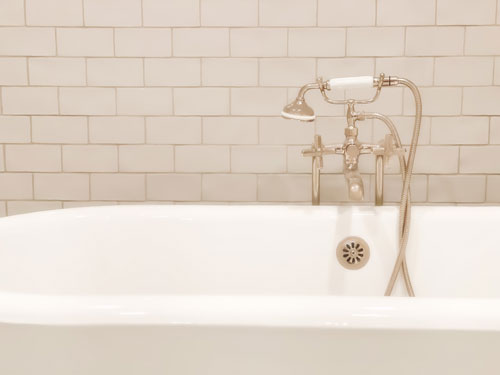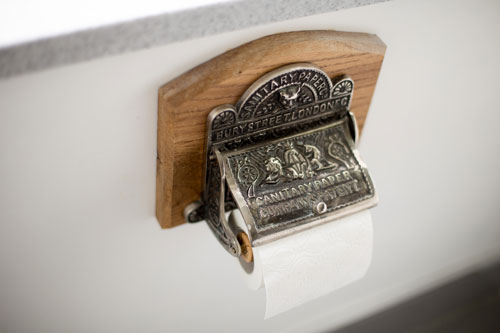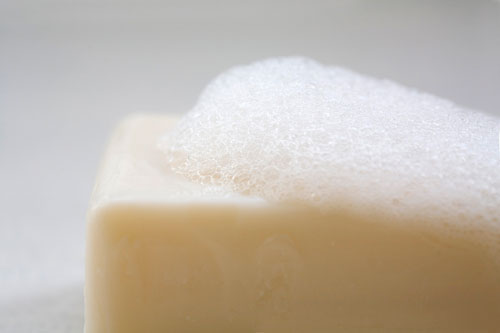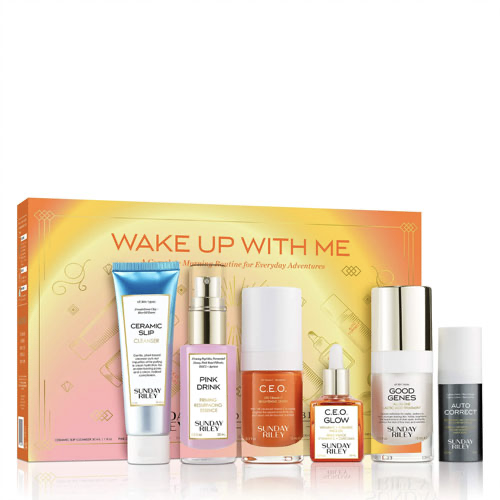These days, we have every convenience at our fingertips. Skincare (like our new limited-edition Downtown Abbey: A New Era Wake Up With Me kit) at the click of a button, flushable toilets, and bubble baths with endless hot water. However, this wasn’t always the case. After recently watching the new Downton Abbey film, it got us thinking that the plot lines in the series or movies never revolved much around personal hygiene.
It got us thinking: What was it like in the 1920s, in the time of A New Era (1927-29)? And how have we evolved in a century?
Bathing
During the Downton Abbey series, there were a few bathroom scenes — Cora Crawley bathing languidly in her ensuite tub and Molesley dying his hair in the servants’ bathroom, which was complete with tub, sink, and visible plumbing. But that may not have been the norm at the time. Baths were often cold or lukewarm (hot water wasn’t common in homes until the ‘30s) and bathing was seen as a task for cleanliness, not a relaxing ritual. Bubble baths didn’t debut until the 1970s, after all. Most of the upper class would have washed their hair once or twice per week; and more frequently as they chopped off their long hair in favor of the bob, which was easier to wash and dry. Also, liquid shampoo became available in 1927, thanks to German chemist Hans Schwarzkopf (yes, the namesake of the brand that still exists today), which was an improvement to bar soap.

Most of us bathe daily in the 2020s, sometimes even twice if we have a post-workout shower. That may change, as experts are saying most of us don’t need to bathe more than three times per week; it may become necessary in situations of water shortages, as well. Depending on your hair, you may wash it daily, every other day or stretch it for four days or more. Many people also consider a bath part of their weekly relaxation ritual, with candles, Epsom salts and calming music to help set the scene.
Toileting
Though houses in the 1920s had lavatories, chamber pots in the bedrooms were still often preferred as the commode of choice. It was the job of the chambermaid to collect the pots a few times throughout the day and dispose of the contents. Though we don’t know the exact loo options for servants at Downton, it’s quite possible they had an outhouse at their disposal. And toilet paper? Not so much. It was common to use torn-up bits of newspaper. Though there was toilet paper available in the ‘20s, it wasn’t until 1935 that advertisements for “splinter-proof” TP debuted. Today we are pretty straightforward with our use of the standard toilet and toilet paper.

Face Washing
In 1927, Palmolive debuted ads for washing the face in the morning and night and wearing cold cream if you had dry skin. There was also advice to never sleep in makeup, which of course was becoming more widely worn amongst women in England at the end of the decade. The folks living upstairs, as in the Crawley family, would have had fresh water poured into a basin each day for face and hand washing, along with a fresh set of cloths.
Today, we are better educated about the needs of our skin. Many women and men have a morning and evening routine when it comes to face hygiene, which includes not only cleansing but exfoliation and treatments.
Armpit Care
And here’s where you learn that marketing makes you tend to your pits. A few things happened that brought attention to the armpit area; for starters, sales of Gillette’s disposable razor started to tank after the war. Solution: Market it to women, who began wearing sleeveless fashion at the time. Tell them that armpit (and leg) hair is unbecoming. Also, deodorant was invented, but no one really used it. Cue the marketing team that started advertising it as necessary to avoid repelling men. The obsession hasn’t waned; lasers, electrolysis, threading and waxing are all part of many women’s regular hygiene these days. On the other end of the spectrum, there are women who are letting their pit hair grow freely. And in terms of pit stick, deodorant has evolved to include options that are healthier for our bodies and the planet.

Period Time
Before the 1920s, women would make homemade pads with old sheets, rags and towels. And during World War I, something called Cellucotton was used for bandages and the nurses who used it on wounds realized it could also soak their blood each month. Kotex debuted in 1918 and was widely distributed in 1921. The first tampon came a little over a decade later. Today, women have dozens of options for disposable pads, liners and tampons; and conscientious women have a variety of eco-friendly choices like the Lani and washable period underpants.
Hand Care
Of course, the upper class would have had soft, clean hands. But the kitchen-maid, like Downton’s Daisy, would’ve had rough hands because there wasn’t dish soap as we know it today. The baking soda they used would leave their hands and forearms chapped, raw and red. Also, because the servants were often grubby and didn’t wash regularly, they would wear white gloves when serving their employers and their guests. And in the 2020s, we don’t even need to start with the emphasis on hand-washing and hand-sanitizing in our current world. How will they remark on our current habits in 100 years? Only time will tell.

We only recommend products we have independently researched, tested, and loved. If you purchase a product found through our links, Sunday Edit may earn an affiliate commission.








